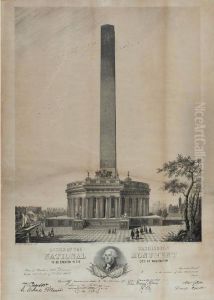Charles Fenderich Paintings
Charles Fenderich was a Swiss-born American lithographer known for his portraits of political and social figures in the United States during the nineteenth century. Born in 1805 in Switzerland, Fenderich emigrated to the United States and became active as an artist in the 1830s, a period that saw a burgeoning demand for lithographic portraits fueled by the rise of popular media and the cult of celebrity surrounding political figures.
Working primarily in the mid-Atlantic region of the United States, Fenderich contributed to the visual culture of the era by creating portraits of notable individuals, including politicians, statesmen, and military officers. His works were often used for political campaigns, serving as a form of mass communication in a time when photography was not yet widely utilized.
Fenderich's lithographs are characterized by their attention to detail and the ability to capture the likenesses of his subjects with a certain degree of realism. This was a significant achievement in an era without the aid of photographic reference, requiring keen observational skills and adeptness in the lithographic process. Despite the limitations of the technology of his time, his works were celebrated for their quality and were widely disseminated, helping to shape the public image of many contemporary leaders.
Fenderich's career spanned several decades, and his prints remain a valuable resource for historians, offering insight into the visual culture and political iconography of the United States during the antebellum period. His portraits are considered important artifacts of American art history, reflecting both the technical advancements in printmaking and the social dynamics of the 1800s.
Charles Fenderich passed away in 1887, having left a significant mark on the field of lithography. His body of work continues to be studied by art historians and is held in the collections of various institutions, where it is appreciated not only for its artistic merit but also for its historical significance.
